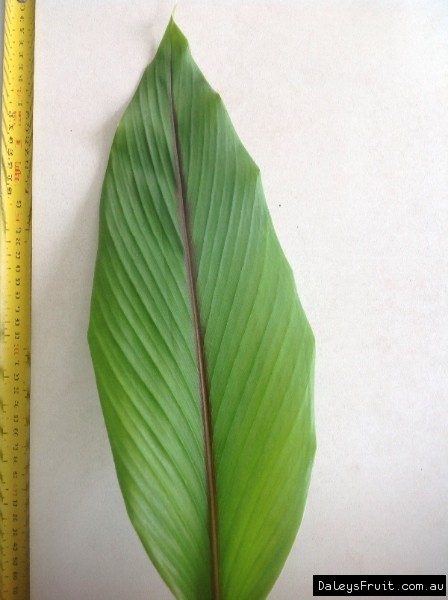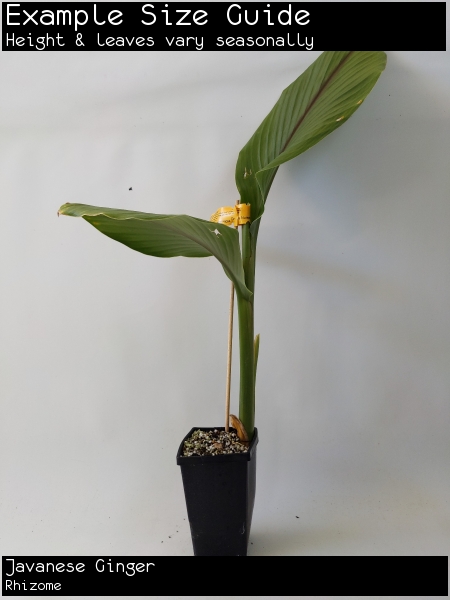Javanese Ginger
Curcuma xanthorrhiza$17.75 ($17.75-$24.90 choose a size)
Specifications of Javanese Ginger
Preferred Climate Tropical, SubtropicalLearn About Climate Zones
Grown From RhizomeLearn About Propagation Methods
Max Height (when in the ground with good conditions) 1-2m
Plants required to Pollinate 1 (Self Pollinating)Learn about Pollination
Can it Handle Frosts? Likes Temps above 5deg
Amount of leaves in Winter? No Leaves (Deciduous)
Quarantine Restrictions to these Areas WA
Suitability in Pots Yes with 35L+ Pot
Water Requirements Moderate Watering
Time to Fruit/Flower/Harvest First Year
Sun or Shade Part (Sun:50-80%)
Preferred Soil Type Good Drainage
Soil pH Neutral (6.6-7.3pH)
Fruiting/Harvest Months July, August, September
Create a Filter to find similar plants
Customers also bought
These plants are often purchased together. Also check plant information for suitability in your orchard.
Ginger - Shampoo
$24.00 ($24.00-$39.00 choose a size)
Chinese Red Bayberry
$89.00 ($46.95-$129.00 choose a size)
Myoga Ginger
$19.90 ($18.75-$19.90 choose a size)
Cape York Turmeric
$24.00 ($19.75-$24.00 choose a size)
Pecan - Shoshonii (B) SP
$39.00 ($29.00-$49.00 choose a size)
Blueberry - Burst (PBR)
$29.00 ($29.00-$99.00 choose a size)
Customer Tips & Reviews Javanese Ginger
Wang Wauk, New South Wales, Australia
Javanese Ginger
I have mine growing in an old bath, surprised how quickly it took off. Soil needs to be kept damp in summer I don't water it in winter. In spring I throw cow poo on it and it seems to like that it receives full sun. I have not prepared Temulawak as yet,




































